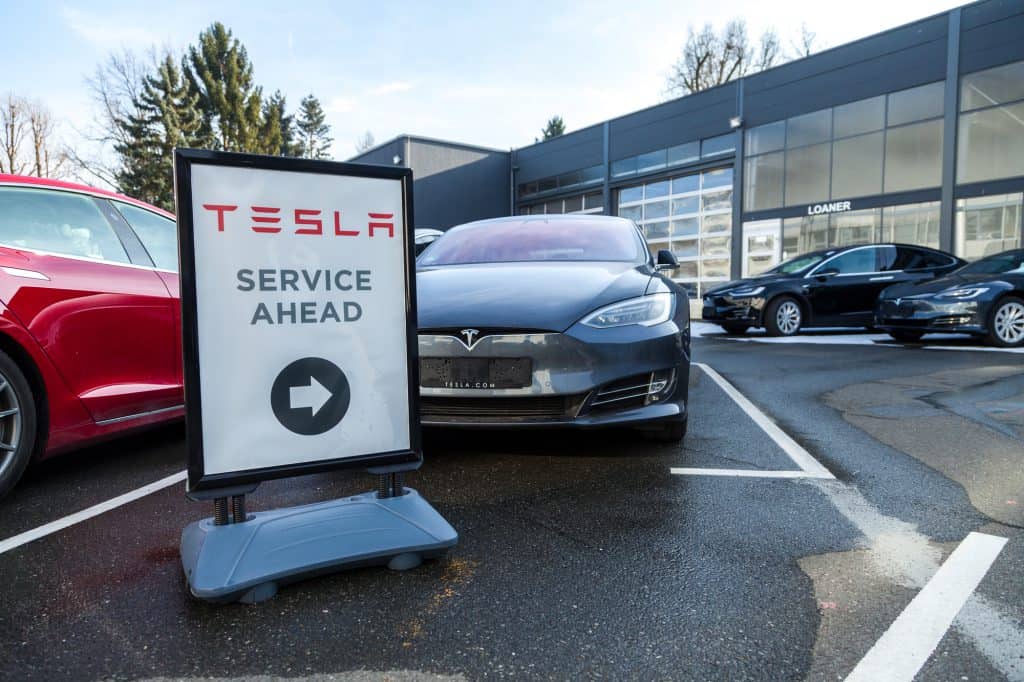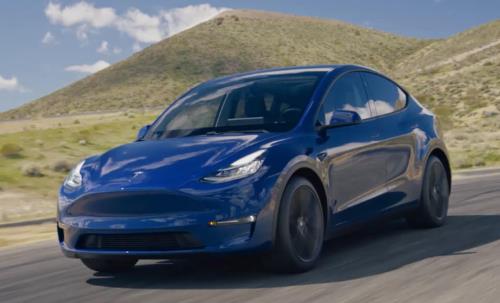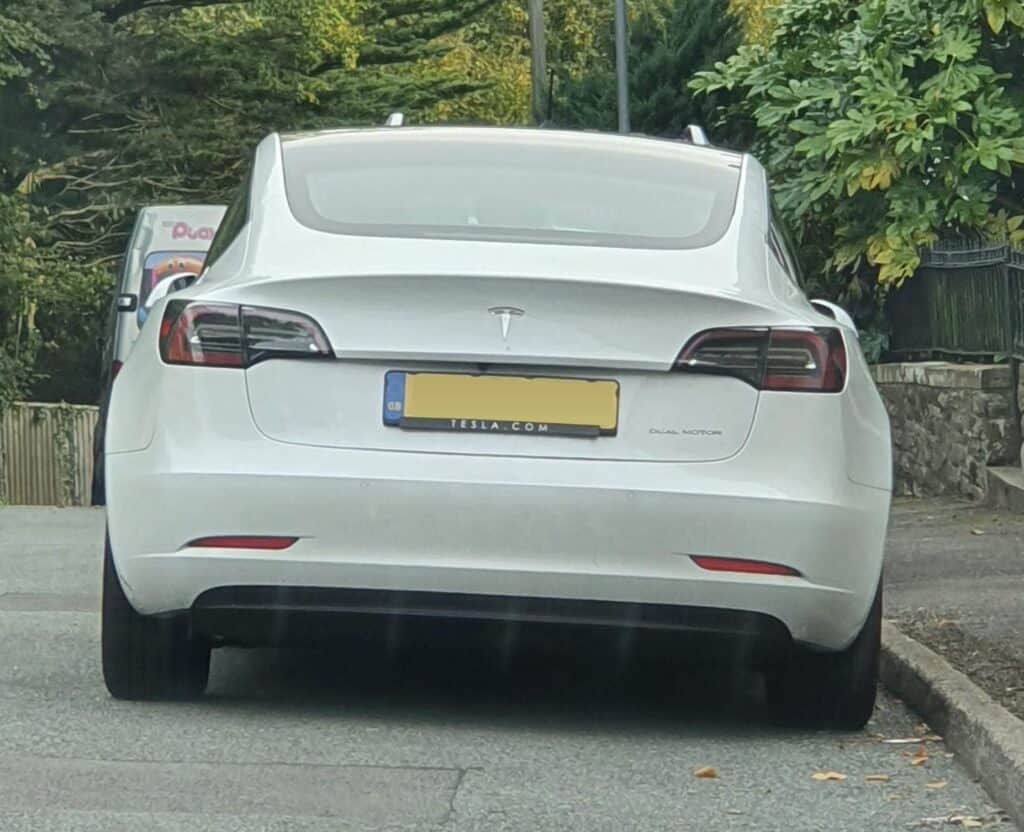Champions of electric cars frequently point to the superiority of EVs when it comes to overall reliability and maintenance costs. While an electric car still costs quite a lot more than a regular internal combustion engine model, the fact that is has so few moving parts means overall there is less wear and tear and thus less maintenance. Many problems with electric cars are fixed via over-the-air updates to the car’s onboard computer.
None of this means that electric cars are impervious to failure, however. They may not need oil changes, filter changes, cam belt replacements or new spark plugs, but they have their own components that can deteriorate and fail, most notably the all-important battery pack. Teslas have been on the electric vehicle seen for a long time, and so in today’s blog we are looking into the reliability of Teslas.
Common EV Problems
As background information, it would be useful to offer some clarity on the types of problems that are common in electric vehicles that warrant attention from professionals:
- First of all, while an EV doesn’t have the same engine components, other things are very much the same, such as brakes, suspension and tires.
- Tires need rotating in an electric vehicle just as they do in a regular car. In fact, it can be even more pressing to do it for an electric car because of the way the battery pack weighs down on the car, and the fact that EVs exert huge torque on the wheels compared to even the highest-specification internal combustion vehicles.
- An EVs brakes work in much the same way as a gasoline car, except that they may be equipped with regenerative brake technology. This can make the brakes a little spongier and less efficient, according to some reports, but it depends on what kind of EV you are driving. Regardless of what extra features they have, the important thing is that they still have brake fluid, and that needs changing. The suspension has the same story when it comes to maintenance.
- The top problem that EV owners face, however, is battery degradation. All things are subject to entropy, and this fact is well exhibited in electric cars, unfortunately. An EV battery’s chemistry can get all out of sync over time, leaving some cells in balance and other out of balance, which impacts overall efficiency and capacity. Owners of the Nissan Leaf, for instance may have gotten 100 miles of range when it was new, but after several years of running and recharging they’d be lucky to get 50 miles on a single charge.
Tesla Reliability

How do these and other maintenance issues apply to Teslas? Are Teslas always breaking down and being rescued from the roadside? As with just about any other EV brand, Teslas are subject to year-on-year updated appraisals, the results of which are fairly unpredictable.
With gasoline and diesel cars, we can tell quickly whether they’re reliable or not, typically within several months or a year, because we have so much history with this type of car to be able to judge early. Many people have operated gasoline cars for 100,000+ miles. With electric cars, on the other hand, it’s a different story. Because so many have only become available within the last 10 years, with new and updated models all the time, the jury is still out on how good they are in the long term.
In 2020, Tesla received a lot of negative coverage regarding reliability. Below we’ll highlight some of the more negative issues that people have been having with Tesla recently. Overall, however, the picture at the end of 2020 was looking pretty grim:
Overall:
Two of the most respected reliability rankings are J.D. Power and Consumer Reports. The former couldn’t place Tesla within their official rankings because they were unable to get proper data from 15 states, which is their minimum level. They did still give Tesla an unofficial score though, which for J.D. Power is looked at in terms of problems reported per 100 vehicles. Top of the official J.D. Power rankings in 2021 is Lexus, with only 81 problems per 100. Tesla was given an unofficial score of 176 (problems per 100 cars), which places it between Chrysler with 166 and Jaguar with 186, and quite near the bottom.
Consumer Reports did list Tesla in their official rankings, but once again it wasn’t good news. In 2020 Tesla was sitting at a fairly respectable 11th place. For 2021, however, they have dropped to 16th with an overall score of 66 out of 100. Ahead of Tesla were Dodge, Nissan, Infiniti, Audi and others. Mazda is also atop the CR pile, with a score of 80. The slippage in both cases is due to reliability issues in Tesla’s cars.
Model S
The earliest reports of Tesla Model S problems came back in 2012 when it later came to light in a Business Insider article that the company had shipped that model year’s vehicles with leaking cooling systems. In the most extreme cases, it was also reported that these leaks could lead to fires. The problem with these 2012 models was traced to a faulty aluminum connector, which was apparently manufactured to the wrong standard and wasn’t fitted properly.
In November 2020, CNBC pointed to the fact that Consumer Reports was no longer recommending the Tesla Model S. It was quite a turnaround considering that only back in 2015, the Tesla Model S was performing so well that it actually broke the CR index and scored 103 out of 100, overall. So, what are the problems in the Model S now? According to the CNBC report, they lie within the air suspension and its main computer and touchscreen controls.
Model Y

Even by the middle of 2020, the Tesla Model Y was receiving some notable negative attention for its quality issues. One article on electrek.co, which mentioned the fact that many Model Y deliveries were either being rejected by buyers, or cancelled by Tesla themselves because of quality issues.
A leaked email from Elon Musk himself revealed to the public in June 2020 that Model Y production defect problems were well known, even to Musk. In his email, he talked about the need to “ramp up Model Y production and minimize rectification needs.” What he’s referring to is the fact that during assembly, too many mistakes were being made that then needed to be fixed post production.
What were some of the problems that were discovered? The most common was the fact that the back seat wasn’t properly attached to its base. Other included build quality issues like gaps between the hood and main body, as well as with some of the trims being uneven and/or badly aligned. At the rear of the car, there has been some issues with moisture building up in the taillights, and also with the tailgate not opening smoothly as it should.
On the interior, some of the remote releases to lower the rear seats haven’t been working properly. Once the seats are lowered, you might experience that badly placed floor trim is pulling the seat back off, and the list goes on with similar kinds of build quality issues. Longer-term reliability issues are harder to place since the Model Y only came onto the market in 2019.
Model X
The Tesla Model X was released in 2015, but by 2020 there was also quite a lot of negative attention drawn to various issues described by owners. The first problems are also related to build quality, and match almost exactly the things we described for the Model Y above.
Other issues included the negative impact on ride quality that happened when you opted for the larger wheel option on the Model X. It was reported that the optional 22-inch wheels were making the ride quality rougher and noisier. This impacted the Model X’s score in comfort and overall reliability in the Consumer Reports index, scoring it a measly 57 points.
Another reliability issue that arose with the Model X was with its navigation system. It was apparently prone to freezing up, which obviously can be extremely disconcerting if and when you are relying on the in-car navigation to get you to an unfamiliar destination safely. There were also problems with supposed sudden and violent acceleration, as well as rusting on the seat rails and chipping paint.
Model 3

With the Model 3, the majority of reliability issues have arisen with the quality of the car’s paintwork, as well as the trim and electronics. A Consumer Reports survey in 2019 was already revealing these problems. It was reported in June 2020 that a group of Canadian owners even filed a class-action lawsuit over the paint quality on their Tesla Model 3s.
Problems with the Model 3, of course, began even before the first ones were rolling off the production line. Consumer Reports noted that the Model 3 was Tesla’s first attempt at something resembling a genuine mass-market electric vehicle. This led to huge numbers of pre-orders, which Tesla then struggled to meet.
Reliability problems discovered by those who eventually received their Model 3s included screens freezing and other strange glitchy behavior on the screen. Other issues pertained mainly to deteriorating paint work and even some saying they discovered chips in the windows.
The Real Source of Tesla-Focused Ire: Autopilot

Many of the issues that YouTubers and others have highlighted on Tesla’s cars have been quite cosmetic. They are also frequently prefaced with remarks like, “I am absolutely not a Tesla hater, and I love my Tesla, but…” A lot of the criticism of Tesla in recent years has been from its most adoring fans, who are perhaps giving their feedback with a sort of loving and constructive message behind it, hoping and willing that Tesla will improve.
When it comes to Tesla’s much talked-about Autopilot system, however, there is a more genuine ire. In late February 2020, even progressive pro-EV Vox ran the headline: “Tesla needs to fix its deadly Autopilot problem.” Not only has the system been blamed for several accidents already, but the company and Elon Musk have reacted to that by pushing the system’s success and growing intelligence even harder.
Some voices online are asking Tesla not to abandon the autonomous driving technology, but rather to stop pretending that it’s currently capable of full self-driving, or that it even will be anytime soon.
On July 9, 2020, the BBC quoted Musk as saying that fully self-driving Teslas are “very close.” After all that happened previously, many could understand Musk’s need to be optimistic, but the also just found his words to be nothing but bluster.
Conclusion: Do Teslas Break Down a Lot? Not as Such
The term “break down” isn’t really the right one to apply to Tesla when you look at the problems to which people are pointing. It seems that the biggest and most immediate issue that needs fixing is build quality. As Tesla continues its uphill battle to meet orders, with customers already waiting inordinately long periods to get their cars delivered, they will also have to be sure to deliver quality along with quantity. When you’ve already waited so long for a Tesla, you’d be gutted to find that something as trivial as a door trim or seat back wasn’t fitted properly.
Mechanically, however, Teslas have been very steady. Once they’d fixed issues with leaking battery packs and whatnot, the fundamentals about the car including its range, performance, handling and acceleration were all rarely, if ever, complained about. Issues with electronics and computer systems can be fixed like any other with patches and updates, which shows us one of the greatest advantages of electric vehicles — that widespread faults can be fixed en masse without the need for recall.
If you’re thinking of buying a Tesla, then, it seems that even after being panned by certain critics, a Tesla is still in many ways a reliable car that won’t see you broken down at the roadside. It’s still also among the fastest EVs with class-beating range, pleasing luxury and also impressive amounts of interior space. As the specter of increasing competition from the likes of the Audi e-tron and GMC Hummer EV emerge in 2021, perhaps Tesla will find ways to minimize the many seemingly careless errors in production that seem to be dragging down their overall ratings.

Our Tesla Model 3 is a total maintenance nightmare. We’ve got 34,000 miles on ours and we keep having to refill the windshield wiper fluid every 6 months. And last year we had to add a little air to the tires. But charging for free at work makes it seem worth all the headaches.
Sorry to hear that you’ve found it a maintenance nightmare. (Although yes, the free work EVSE charging is a nice bonus!)
Well plaid sir. I feel like some of these reliability complaints are actual. and simultaneously, I wonder if some are exaggerated. Are these articles written by the people who write gas car articles and have done so for many years? I’m teetering on an accusation. But when we learn who owns news outlets, it changes things. 100% unbiased reviews are likely unicorns anymore.
I don’t disagree, Dave. And it’s not helped by the world still being fairly gas-car centric, as you suggest.